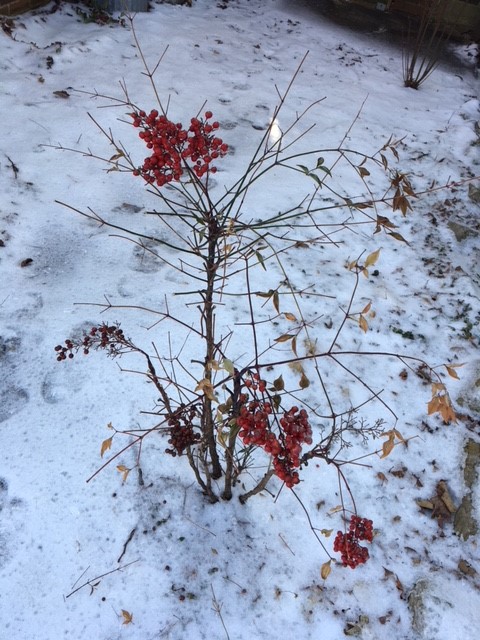A few years ago I was at a tree conference and Doug Tallamy of the University of Delaware was presenting on oaks and native gardening. He made an off the cuff remark about berries from the nandina shrub (Nandina domestica, a.k.a. sacred bamboo or heavenly bamboo) being toxic to songbirds and just continued with his talk, apparently unaware of the moans, murmurs and concerned whispers among the audience. This was bad news to many of us.
While labeled an invasive, ‘noxious’ weed by the US Department of Agriculture, nandina has been favored by gardeners around the world (including myself) for many reasons, one being the winter aesthetic interest it provides with its clusters of red berries (see image). Berries that are killing songbirds, apparently. Just as one example, in 2009 researchers at the University of Georgia found conclusive evidence of nandina berries inducing cyanide poisoning in migrating cedar waxwings. Typically this is a berry birds will avoid but in late winter and early spring, when resources are diminished and birds turn to a berry-heavy diet, nandina can easily find its way on the menu.
If yanking out this plant is not an option, one thing we can consider is pruning off and disposing the berries before birds start feeding on them. Just food for thought.
 Contact Us
Contact Us

